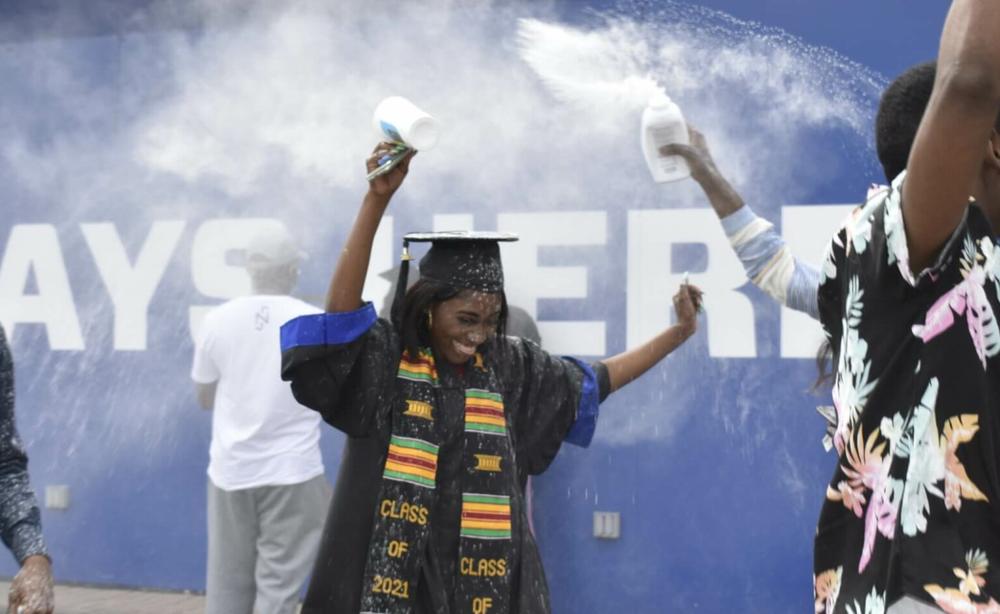
Caption
Grace Mbenza was surprised with baby powder confetti after graduating at Georgia State University's Center Parc Stadium in Atlanta in 2021. Mbenza got her associate degree in health science from Georgia State's Perimeter College and plans to get a bachelor's degree in nursing.
Credit: Ross Williams / Georgia Recorder

